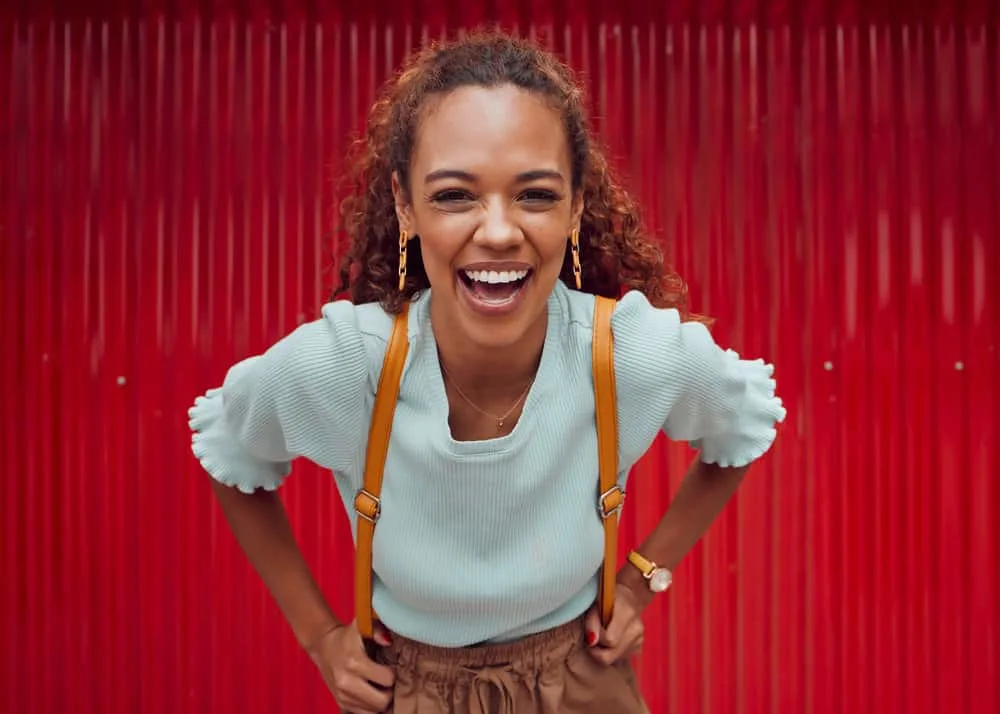
Taking care of curly hair is no walk in the park. It’s really hard work, in fact. But that doesn’t mean that you can’t do it or that it’s got to be a chore.
To ensure that you can take good care of your hair without losing your mind or suffering hair setbacks, read this article in its entirety.
In it, we’ll tell you exactly how to take care of curly hair. It’s a lot to cover, but we’ll make everything easy to understand so you won’t get lost. Let’s get right into it!
Table of Contents
- 1 How to Take Care of Curly Hair
- 2 Keep Your Hair Hydrated
- 3 Condition and Deep Condition Often
- 4 Detangle Gently and as Needed
- 5 Don’t Overwash
- 6 Use Gentle Hair Products
- 7 Protect Against Sun Damage
- 8 Protect Your Hair at Night
- 9 Wash and Condition Your Hair Correctly
- 10 Get Protein Treatments as Needed
- 11 Minimize Heat and Use a Heat Protectant
- 12 How to Treat Curly Hair After a Shower
- 13 How to Make Your Curls Last All Day
How to Take Care of Curly Hair
insert brief summary before posting with chatgpt
Keep Your Hair Hydrated
If you don’t remember anything else from this article, remember that curls need hydration – lots of it.
One thing some don’t know about curls is that they’re prone to dryness just because of their texture. If your hair was straight, your scalp oils would be able to run down the length of your strands with no problem.
But since your hair is full of kinks, coils, twists, and turns, the oils aren’t able to travel down the entire length of your strands. And that leaves your mid-lengths and ends dry and prone to brittleness and breakage.
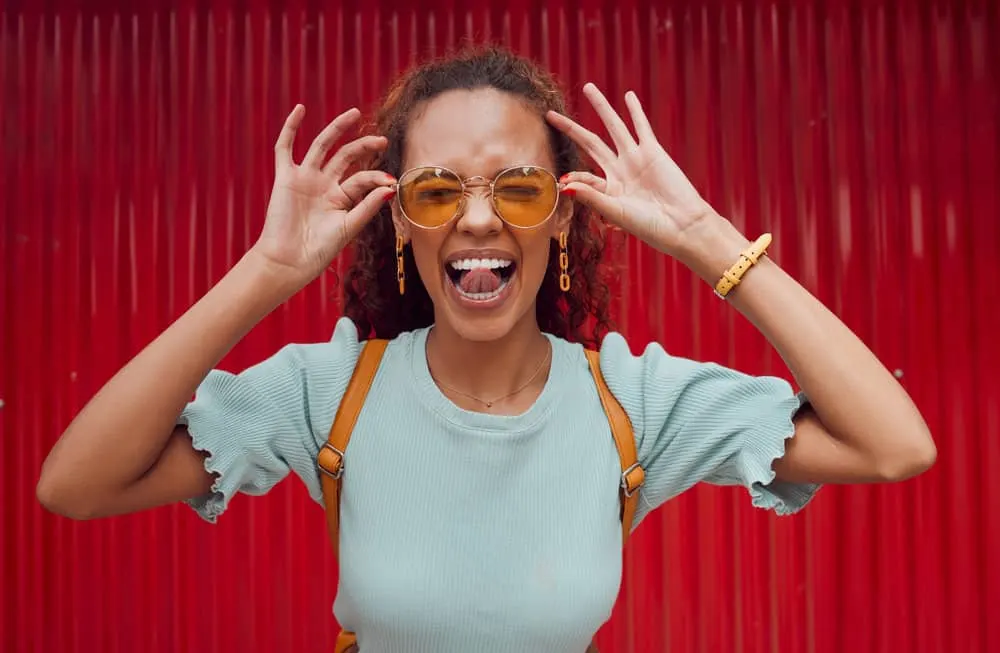
So, do the best you can to keep your hair hydrated. If you’re wondering how you’re going to do that, here are some tips to help you out:
- Use a moisturizer or leave-in that lists water as one of the first few ingredients – preferably the first. On product lists, the first ingredient on the label is present at the highest concentration. And the next few ingredients are also prominent in the formula, though in a descending overall concentration. If your moisturizer is water-based (contains mostly water), there’s a good chance that it’ll be hydrating to your hair. Water is, after all, the best hydrator out there.
- Protect your hair from moisture loss. Moisture loss occurs when the hair’s moisture evaporates, and the hair is left dry. You want to prevent this from happening so that your hair will stay hydrated, supple, elastic, and healthy overall. You can do so by slathering your hair in oil, covering your hair up whenever you’re in the house or sleeping, or using products with protective ingredients (like silicones, vitamin E, vitamin C, etc.).
- Keep your hands out of your hair. Every time you touch your hair, some of its moisture is transferred onto your fingers. So, if you have hands-in-hair syndrome, your hair could begin to show signs of dryness. After you’re done styling your hair, leave it be.
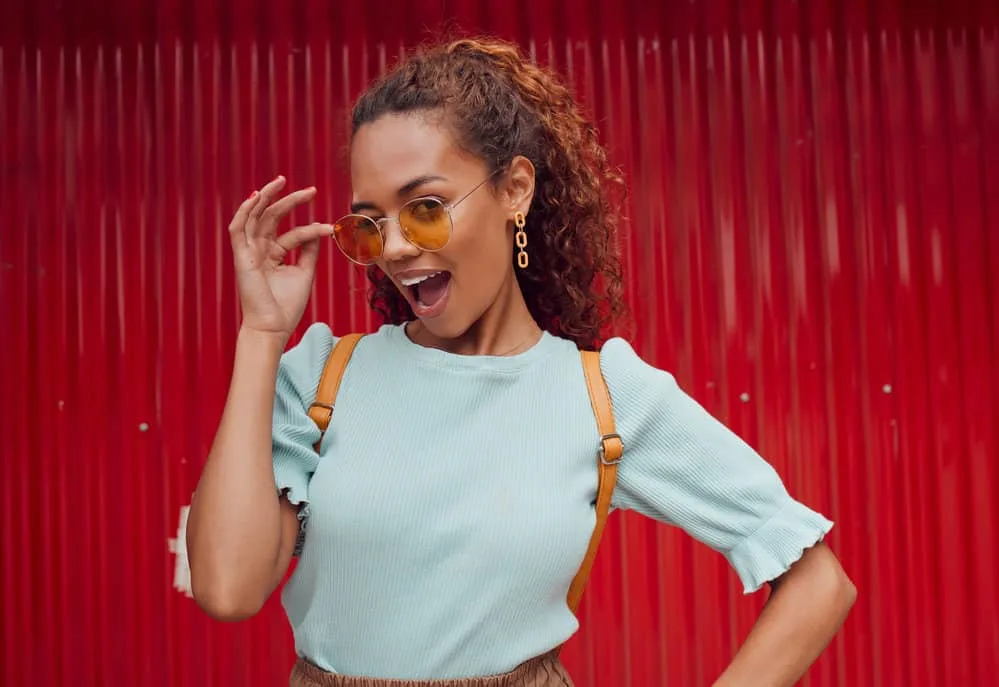
Condition and Deep Condition Often
Some think they can simply wash their hair, apply moisturizer, and go. That couldn’t be further from the truth. It’ll take more than that to keep your hair healthy and thriving. Conditioners and deep conditioners play a huge role in caring for your curls.
These are products that contain a variety of hair-loving vitamins, minerals, emollients, and hydrators. They may also contain proteins and other ingredients that foster hair repair and resilience.
All of these ingredient types and more provide the following benefits for hair:
- Smoother hair.
- Easier detangling.
- A beautiful shine.
- Softer hair.
- Renewed moisture levels after shampooing.
Note: This is not a full list of conditioner benefits.
Both conditioners and deep conditioners have a place in your curly hair regimen. But they should be used in different situations. Conditioners should be used on most of your wash days to bring moisture back into your hair after shampooing.
They give your hair surface-level nourishment.
Deep conditioners go much deeper, penetrating the hair shaft to deliver all of that goodness to the inner layers of the hair. You’ll need this every now and again to keep your curls on the right track.
Condition your hair whenever you shampoo unless your hair is feeling very dry. In that case, you should switch your conditioner out for a deep conditioner for deeper hair repair.

Detangle Gently and as Needed
Is detangling your curls the bane of your existence? You might be surprised to find out that this is a universal frustration for curly girls and guys. Still, if you want your curls to look and feel their best, you’ve got to detangle them gently and only as needed.
We’ll jump into greater detail here.
For those with straight hair, detangling can be done every day with minimal damage to the hair. But curls tend to become very easily intertwined with neighboring strands, so detangling them can take some serious work and potentially cause some damage.
That’s why you shouldn’t detangle your hair more often than you need to. Once a week is about standard for those with curls, but you can do it twice a week if you deem it necessary.
Whenever you do detangle your hair, ensure that you’re doing it as gently as possible. Here’s how to detangle your hair without damaging it:
- If it’s wash day, shampoo your hair and lightly ring it out with your hands.
- Separate your hair into four sections.
- Coat each section in conditioner.
- Go section by section using your fingers to remove any large tangles. Don’t use your nails for any part of the detangling process.
- Go in with your wide-tooth comb and remove any tangles that remain.
Note: If you need to detangle your hair in a pinch, you can wet your hair down with a spray bottle, apply a detangler or conditioner, and work through the tangles with a wide tooth comb or your fingers.
The detangling process shouldn’t be painful by any means, and you should never hear a snapping sound when you’re combing out tangles. Snapping sounds mean breakage.

Don’t Overwash
Overwashing your hair is one of the worst things you can do to your curls. Even when you use shampoos that are supposed to be gentle on your hair, the act of shampooing tends to dry the hair out. And dryness is your curls’ worst enemy.
It’s for this reason that you should limit the number of times you wash your hair in any given week. For most people, a weekly wash day is ideal.
Others may need to wash their hair every couple of days. Either way, you should refrain from washing your hair every day. It’s a surefire way to dry out your already-vulnerable strands.
Whenever you do wash your hair, ensure that you’re using gentle products (more on that in the next section).

Use Gentle Hair Products
The fragileness of curls should never be underestimated. They require gentle products for every part of your hair routine, from your shampoo to your conditioner and so on.
The best way to ensure a given product will help instead of harming your curls, look at the ingredient list. There are many ingredients that curly folks try to steer clear of, but here are the main ones to be on the lookout for:
- Sulfates. Sulfates are surfactants that work to lift away dirt and debris. You’ll find them in typical shampoos. While they are really good at cleansing the hair and scalp, they do so far too well, to the point that they strip away way too much of the hair’s natural lubrication. Look for shampoos that don’t have sulfates and instead contain sulfate alternatives, like decyl glucoside or Cocamidopropyl betaine.
- Salt. We’re talking table salt. Salt pops up in a variety of hair products, from your shampoos to your hair sprays. It makes hair products feel creamier and can thicken up products to make them easier to use. But it can also dry out your hair beyond belief. That’s why most Curlies should stay away from products with this ingredient.
- Drying alcohols. Drying alcohols are often added to hairsprays, which isn’t good by any means for curly hair. These alcohols zap the moisture from curls, making them more vulnerable to breakage and even harder to work with. Don’t go avoiding all alcohols in hair products, though. Not all alcohols you’ll find in hair products are bad. Cetyl alcohol and Cetearyl alcohol, for example, are fatty alcohols that nourish, lubricate, and protect the hair. The ones you’ll want to stay away from are SD alcohol, ethyl alcohol, isopropyl alcohol, and the like. These are short-chain alcohols that have a drying effect on the hair.
Avoiding the previous three ingredients in your hair products can make a monumental difference in your curls.

Protect Against Sun Damage
Products aren’t the only thing that can do a number on your curls – the sun can destroy your curls as well. Here are a few of the effects that the sun could have on your unprotected curls:
- It can dry your curls out, leaving them frizzy and unkempt looking.
- It can make your hair brittle if sun exposure is substantial enough.
- It can fade your hair color prematurely.
Taking care of your curls means you need to protect them at every turn. Use one of the following remedies to shield your hair from the sun’s effects:
- Use a UV-protective hairspray. Many haven’t even heard of UV-protectant hairsprays, but thank goodness they exist. They contain SPF and begin protecting your hair right after spritzing it on.
- Cover your hair when you’re out. Another way to shield your hair from UV rays is to cover it up whenever you’re out in the sun. This could be done by throwing a hood, hat, bonnet, or scarf on for a while. The sun’s rays won’t be able to bypass the fabric and harm your curls.
- Stay in the shade. When you don’t have access to a UV protective hairspray or don’t want to cover your hair up, make a purposeful effort to stay in the shade.
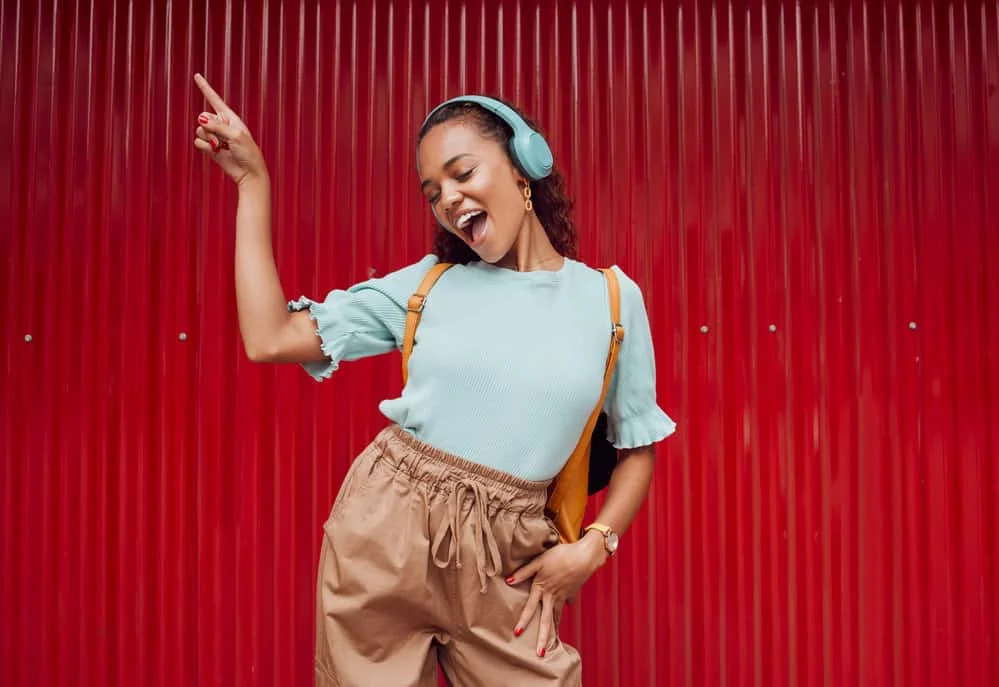
Protect Your Hair at Night
Nightly curl protection is a hot topic in the natural hair community, and it has been for a long time. Your healthy haircare regimen doesn’t stop just because you go to bed. As you toss and turn at night, if your hair is unprotected, it could really take a beating.
The most troubling issue that could come into play during the night has to do with your covers and pillowcases. Most of us use pillowcases and covers that are made of cotton, which is a very absorbent material.
It’s so absorbent that when it comes in contact with your hair as you sleep, it can dry it out. But that’s not all – it can also make your curls frizzy, forcing you to style them in the morning.
Keep reading for a couple of ways to protect your hair at night:
- Cover your hair with a silk or satin bonnet or scarf. Silk and satin bonnets and scarves are made of soft, slippery, non-absorbent material. So, when you sleep in them, and your hair rubs up against them, nothing much happens. Your curls remain defined, won’t get dried out, and likely won’t require much styling in the morning.
- Sleep on a silk or satin pillowcase. Don’t like the idea of sleeping with something on your head? Well, you don’t have to. Silk and satin pillowcases deliver just about all of the same benefits that bonnets and scarves do without having to put anything on your head. Just know that even if you sleep on a silk or satin pillowcase, your hair could still go all over the place and end up lopsided or wonky in the morning. But it will still remain moisturized – a major plus.
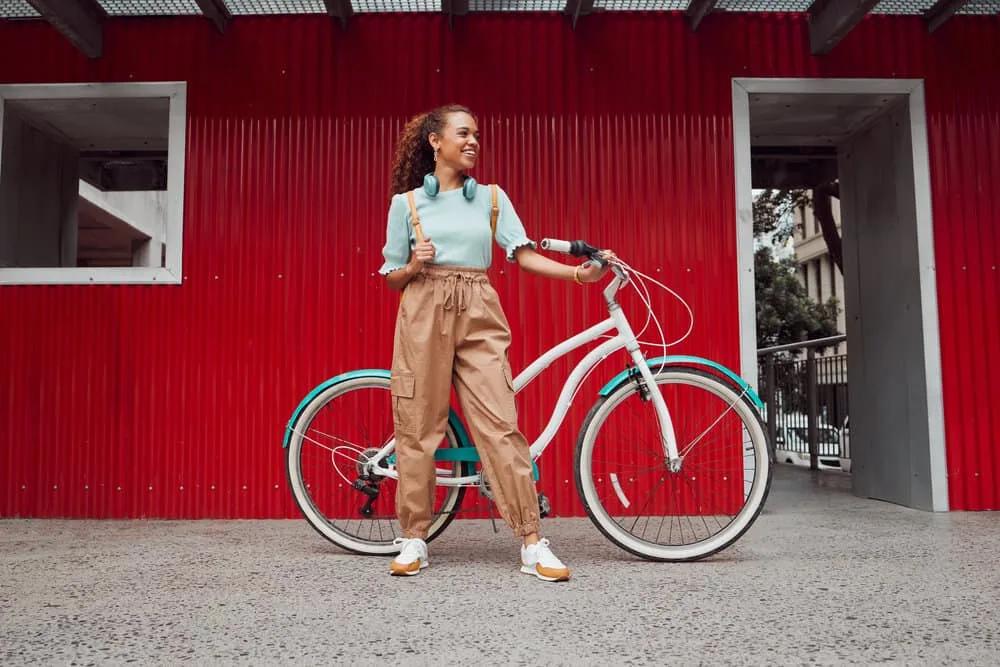
Wash and Condition Your Hair Correctly
It’s not enough to wash and condition your hair on a regular basis if you have curls. You have to do both of these correctly. Though it seems simple, you’d be surprised at how many people don’t know how to properly wash and condition their curls.
Here are some tips to ensure that your shampooing and conditioning sessions are effective and non-damaging:
How to Shampoo Your Curls
- Hop in the shower or lean over a sink and drench your hair in water.
- Separate your hair into 2 to 4 sections to make your curls easier to work with.
- Dispense some shampoo into your hands.
- Choose a section and apply the shampoo, focusing on the roots.
- Scrub your scalp with the pads of your fingers. Never use your nails.
- Repeat on all of the sections.
- Pull the shampoo down the length of your hair.
- Rinse your hair thoroughly and only repeat if necessary.
Note: When shampooing, you should never pile your curls on top of your head. This could cause tangling that could lead to frustration and breakage later on when you try to detangle. Also, the point of shampooing is to remove excess oil and buildup, which usually accumulate on the scalp and roots of the hair. So, that’s where you should focus your shampoo – not the mid-lengths, and especially not the ends.
How to Condition Your Curls
Conditioning for curls should focus on repairing and babying your ends. That’s where the bulk of hair damage is usually situated. So, when applying your conditioner, focus mainly on the ends of your hair.
And don’t forget to wait for a few minutes to let the conditioner penetrate your strands. While you wait, you’ll detangle your hair using the instructions we gave earlier in the article.

Get Protein Treatments as Needed
Until now, we’ve been focusing intently on providing and retaining moisture in your curls. And it’s very important. But if you don’t have enough protein in your strands (perhaps due to excessive heat or chemical treatments), you could end up with stringy, limp strands that have lost all their personality.
Your hair could also lose its elasticity and break off easier.
So, if you notice any of the signs we just mentioned, your hair could use some protein. Protein makes up the structure of our strands. That’s why when your hair is deficient in protein, it’s imperative to give it some right away.
You can incorporate protein into your hair routine in many ways; here are two of the easiest:
- Use a protein-containing deep conditioner. Deep conditioners come in a ton of varieties. You’ll use a moisturizing deep conditioner more often than not, especially if you have low-porosity hair. But if your hair needs protein, you’ll switch to a protein-deep conditioner. It is formulated with protein and can be used just like your normal deep conditioner. These deep conditioners can help you if you need just a little protein, but you’ll need a more involved treatment for a bigger protein deficit.
- Get a protein treatment. Protein treatments contain a high volume of proteins and can remedy even the most protein-deficient hair. Professionals in the salon often do these treatments, but you can pull them off at home if you can follow the instructions on the packaging.

Minimize Heat and Use a Heat Protectant
A well-known hallmark of a healthy hair routine is protection from excessive heat. Too much heat (from your curling iron, flat iron, or blow dryer) can burn away your hair’s protective outer cuticle and make your hair drier than the Sahara.
Dry hair is prone to brittleness and breakage. To prevent these issues, be conservative with the temperature settings on your heat tools, and always use a heat protectant before applying any type of heat to your hair.
How to Treat Curly Hair After a Shower
What you do to curly hair after a shower will depend partly on what you plan on doing to your hair. But if you want to define your curls after a shower, you’ll apply a leave-in conditioner spray or cream, rake that through, and then smooth a curl definer through your strands.
If your curls are loose and you want to maximize your curl pattern, scrunch your hair with your hands. Once that’s done, you can air dry or diffuse your curls – your choice.
How to Make Your Curls Last All Day
The key to making your curls last all day is to use the right products during the curl definition process. You’ll need a product that can define your curls and freeze them in place without making them crunchy.
You can use a gel, a defining cream, or even a flexible hold spray. Experiment with these products to see which ones work well for you.
So, there you have it – how to take care of curls. We hope you found all the information you were looking for, and we wish you the best with your hair!
